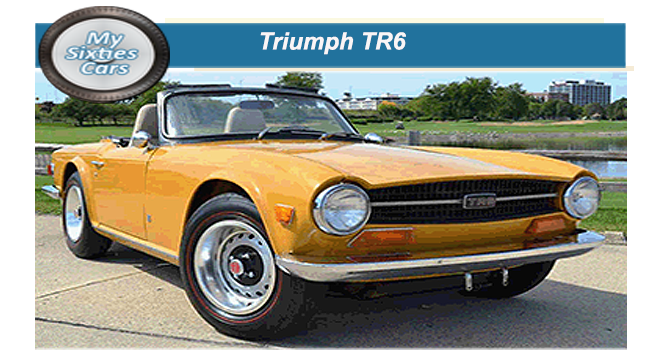 In appearance, the TR6 was not too far removed from its predecessors, the TR4 and TR5 and could even be described as dated compared to some of its competitors released in 1968.
In appearance, the TR6 was not too far removed from its predecessors, the TR4 and TR5 and could even be described as dated compared to some of its competitors released in 1968.
From a technical viewpoint at least, parts of the TR6's design were outdated, especially the mechanicals. The car’s body was bolted onto the tubular steel frame, rather than the two being integrated as a “unibody” design.
The 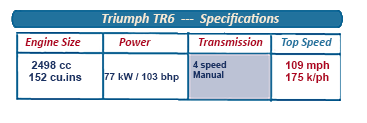 truth was that Triumph liked the profile first developed by Giovanni Michelotti first developed with the TR4 that they let it run for a total of fifteen years, till the more radical TR7 came along in 1976.
truth was that Triumph liked the profile first developed by Giovanni Michelotti first developed with the TR4 that they let it run for a total of fifteen years, till the more radical TR7 came along in 1976.
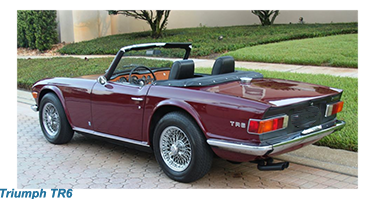 The TR7 that followed may have looked more cutting edge, but in the opinion of many, it lacked the muscle and sharpness of the beloved TR6.
The TR7 that followed may have looked more cutting edge, but in the opinion of many, it lacked the muscle and sharpness of the beloved TR6.
In all markets apart from the United States (due to emission rules), the TR6’s 2,498-cc, six-cylinder engine was fuel injected, capable of producing 150 bhp and capable of taking the car to 120 mph (190 kph).
Later models even had to have their engine detuned to meet ever-demanding air pollution standards.
The standard four-speed gearbox was available with overdrive, which made it easier to drive on long journeys but also gave more flexibility on twisty roads through the close ratios.
![]()
By the time the TR6 was released, the Triumph group had fully merged with the British Motor Corporation to form British Leyland (BL), a move which ironically made them part of the same consortium as MG one time their greatest rivals.
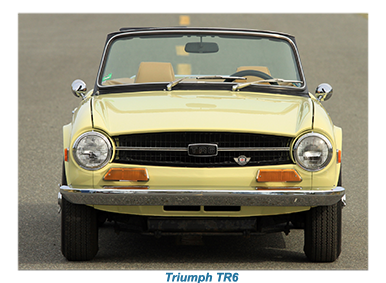 MG, at that point, were under a cloud following the failure of their six-cylinder MGC that was due to be dropped in 1969 after just two years in production.
MG, at that point, were under a cloud following the failure of their six-cylinder MGC that was due to be dropped in 1969 after just two years in production.
The TR6 may have been understated and even uninspiring, but it was certainly a significant improvement on the TR5, which had gone out of production in even less time after selling just a few thousand models.
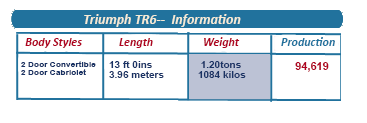 A gap in the market opened up for a six-cylinder sports that Triumph almost felt obliged to fill, seeing it as an oportunity to take some share of the market in the US.
A gap in the market opened up for a six-cylinder sports that Triumph almost felt obliged to fill, seeing it as an oportunity to take some share of the market in the US.
Triumph were well aware that the gap would soon close, while they faced an another and even bigger problem that their in-house styling guru, Giovanni Michelotti, had become totally immersed in a host of other BL projects and was unavialable for the near future.
![]()
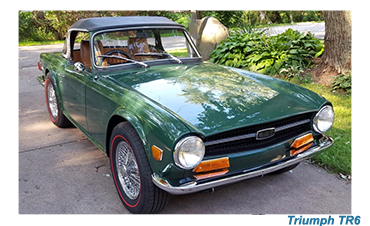 To replace the irreplaceable Italian, Triumph went to Germany, to the recently expanded but long running Karmann design consultancy.
To replace the irreplaceable Italian, Triumph went to Germany, to the recently expanded but long running Karmann design consultancy.
Karmann was given a tough task by the budget-conscious Triumph: to transform the appearance of the TR5 without altering the basic structure of the vehicle.
The TR6's modern looks attracted many new converts to the sporting Triumph cause, despite handling remaining equivalent to the previous TR5 (with the same chassis of course), although a front anti-roll bar made it a better proposition on fast corners.
The last TR of the Sixties, the Triumph TR6 was one of the most popular and commercially successful sports cars ever, with close to 100,000 sold during its eight-year production run.Of that figure, less than 10% remained in the UK with the remainder going for export.






